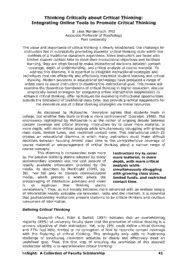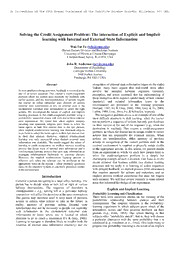
DTIC ADA459074: Solving the Credit Assignment Problem: The Interaction of Explicit and Implicit Learning with Internal and External State Information PDF
Preview DTIC ADA459074: Solving the Credit Assignment Problem: The Interaction of Explicit and Implicit Learning with Internal and External State Information
Solving the Credit Assignment Problem: The interaction of Explicit and Implicit learning with Internal and External State Information Wai-Tat Fu (wfu@cmu.edu) Human Factors Division and Beckman Institute University of Illinois at Urbana-Champaign 1 Airport Road, Savoy, IL 61874, USA John R. Anderson (ja+@cmu.edu) Department of Psychology Carnegie Mellon University 5000 Forbes Avenue Pittsburgh, PA 15213 USA Abstract recognition of external state information (signs on the walls). Indeed, many have argued that real-world skills often In most problem-solving activities, feedback is received at the involve the interplay between cognition (internal), end of an action sequence. This creates a credit-assignment perception, and action (external) that the understanding of problem where the learner must associate the feedback with these interactive skills requires careful study of how internal earlier actions, and the interdependencies of actions require (memory) and external information (cues in the the learner to either remember past choices of actions environment) are processed in the learning processes (internal state information) or rely on external cues in the environment (external state information) to select the right (Ballard, 1997; Fu & Gray, 2000; 2004; Gray & Fu, 2004; actions. We investigated the nature of explicit and implicit Larkin, 1989; Gray, Sims, Fu, & Schoelles, in press). learning processes in the credit-assignment problem using a The navigation problem above is an example of one of the probabilistic sequential choice task with and without external most difficult situations in skill learning: when the learner state information. We found that when explicit memory has to perform a sequence of actions but only gets feedback encoding was dominant, subjects were faster to select the on their success at the end of the sequence (e.g., when the better option in their first choices than in the last choices; destination is reached). This creates a credit-assignment when implicit reinforcement learning was dominant subjects problem, in which the learner has to assign credits to earlier were faster to select the better option in their last choices than actions that are responsible for eventual success. When in their first choices. However, implicit reinforcement learning was only successful when distinct external state actions are interdependent, either memory of previous information was available. The results suggest the nature of actions or recognition of the correct problem state in the learning in credit assignment: an explicit memory encoding external environment is required to properly assign credits process that keeps track of internal state information and a to the appropriate actions. In this article, we present results reinforcement-learning process that uses state information to from an experiment in which we study how people learn to propagate reinforcement backwards to previous choices. solve the credit-assignment problem in a simple but However, the implicit reinforcement learning process is challenging example of such a situation. Our focus is on the effective only when the valences can be attributed to the recent proposal that humans exhibit two distinct learning appropriate states in the system – either internally generated processes and we apply it to learning of action sequences states in the cognitive system or externally presented stimuli in the environment. with delayed feedback: an explicit process (with awareness) that requires memory for actions and outcomes, and an Introduction implicit process (without awareness) that does not require such memory. We will first review research in some related Consider a person navigating in a large office building. The areas that informed the design of our experiment. person has to decide when to turn left or right at various hallway intersections. The sequence of decisions is Explicit and Implicit Learning interdependent – e.g., turning left at a particular hallway intersection will affect the decisions at the next intersections. Probability Learning and Classification There have been numerous studies on the learning of the The person may therefore need to keep track of previous probabilistic relationship between choices and their actions to inform what actions to take in the future. In consequences. The simplest situation is the probability- reality, memory of previous actions (internal state learning experiment in which subjects guess which of the information) may not be necessary as people can explicitly alternatives occurs and then receives feedback on their seek information in the environment (external state guesses (e.g., Estes, 1964). One robust finding is that information) to know where one is located or which subjects often “probability match”; that is, they will choose direction to go to reach a destination (Fu & Gray, 2006). a particular alternative with the same probability that it is Learning to navigate is therefore likely to involve both the reinforced (e.g., Friedman et al., 1964). This leads many to retention of internal state information (memory) and the propose that probability matching is the result of an implicit Report Documentation Page Form Approved OMB No. 0704-0188 Public reporting burden for the collection of information is estimated to average 1 hour per response, including the time for reviewing instructions, searching existing data sources, gathering and maintaining the data needed, and completing and reviewing the collection of information. Send comments regarding this burden estimate or any other aspect of this collection of information, including suggestions for reducing this burden, to Washington Headquarters Services, Directorate for Information Operations and Reports, 1215 Jefferson Davis Highway, Suite 1204, Arlington VA 22202-4302. Respondents should be aware that notwithstanding any other provision of law, no person shall be subject to a penalty for failing to comply with a collection of information if it does not display a currently valid OMB control number. 1. REPORT DATE 3. DATES COVERED 2006 2. REPORT TYPE 00-00-2006 to 00-00-2006 4. TITLE AND SUBTITLE 5a. CONTRACT NUMBER Solving the Credit Assignment Problem: The interaction of Explicit and 5b. GRANT NUMBER Implicit learning with Internal and External State Information 5c. PROGRAM ELEMENT NUMBER 6. AUTHOR(S) 5d. PROJECT NUMBER 5e. TASK NUMBER 5f. WORK UNIT NUMBER 7. PERFORMING ORGANIZATION NAME(S) AND ADDRESS(ES) 8. PERFORMING ORGANIZATION Carnegie Mellon University,Department of REPORT NUMBER Psychology,Pittsburgh,PA,15232 9. SPONSORING/MONITORING AGENCY NAME(S) AND ADDRESS(ES) 10. SPONSOR/MONITOR’S ACRONYM(S) 11. SPONSOR/MONITOR’S REPORT NUMBER(S) 12. DISTRIBUTION/AVAILABILITY STATEMENT Approved for public release; distribution unlimited 13. SUPPLEMENTARY NOTES The original document contains color images. 14. ABSTRACT 15. SUBJECT TERMS 16. SECURITY CLASSIFICATION OF: 17. LIMITATION OF 18. NUMBER 19a. NAME OF ABSTRACT OF PAGES RESPONSIBLE PERSON a. REPORT b. ABSTRACT c. THIS PAGE 6 unclassified unclassified unclassified Standard Form 298 (Rev. 8-98) Prescribed by ANSI Std Z39-18 habit-learning mechanism that accumulates information Neither of these paradigms then reflects the complexity of about the probabilistic structure of the environment (e.g., the credit-assignment problem that people frequently face in Graybiel, 1995). One important characteristic of this kind of real life. We combine research from both areas by studying habit learning is that information is acquired gradually how people learn to assign credits to different actions in a across many trials, and seems to be independent of probabilistic sequential choice task, in which sequences of declarative memory as amnesic patients were found to actions are executed before feedback on whether they are perform normally in a probabilistic classification task correct or not is received, and a particular action sequence is (Knowlton, Squire, Gluck, 1994). However, for non- correct only with a certain probability. amnesic human subjects, it is difficult to determine whether Reinforcement Learning probabilistic classification is independent of the use of Learning from delayed feedback often involves the temporal declarative memory. Since declarative memory is dominant credit-assignment problem in which learners must apportion in humans, it has been argued that learners often initially credit and blame to each of the actions that resulted in the engage in explicit memory encoding in which they seek to final outcome of the sequence. The temporal credit remember sequential patterns even when there are none assignment problem is often done by some form of (Yellott, 1969). Researchers argue that true probabilistic reinforcement learning (e.g., Sutton & Barto, 1998). trial-by-trial behavior only appears after hundreds of trials – Recently, psychological research have found that in many perhaps by then subjects give up the idea of explicitly learning situations, neural activities in the basal ganglia encoding patterns and the implicit habit-learning process correlate well with the predictions of reinforcement learning becomes dominant (Estes, 2002; Vulkan, 2000). (e.g., Schultz, Dayan, & Montague, 1997). Elsewhere we Recent research on complex category learning has also also show that it produces a wide range of behavioral data in provided interesting results suggesting multiple learning the probability-learning literature and in other delayed systems (Allen and Brooks, 1991; Ashby, Queller, and feedback learning situations (Fu & Anderson, in press). The Berretty, 1999; Waldron and Ashby, 2001). For example, role of the basal ganglia is also closely related to the habit- Waldron and Ashby (2001) showed that while a concurrent learning (procedural) system in which past response- Stroop task significantly impaired learning of an explicit outcome information is accumulated through experience rule that distinguished between categories by a single (e.g., Graybiel, 1995). Such learning is also believed to be dimension, but did not significantly delay learning of an distinct from the explicit memory (declarative) system (e.g., implicit rule that requires integration of information from Poldrack, et al., 2001; Daw, Niv, & Dayan, 2005). multiple dimensions. The basic prediction of reinforcement learning is that Sequence Learning when feedback is received after a sequence of actions, only The explicit/implicit distinction has also been investigated the last action in the sequence will receive feedback but that through a paradigm called sequence learning (e.g., on later trials its value will then propagate back to early Cleeremans & McClelland, 1991; Cohen, Ivry, Keele, 1990; actions. By itself this mechanism cannot learn in cases Curran & Keele, 1993; Mathews, et al., 1989; Nissen & where success depends on the sequence of actions rather Bullemer, 1987; Sun, Slusarz, Terry, 2005; Willingham, than the individual actions. Memories of previous actions or Nissen, & Bullemer, 1989). In a typical experiment subjects observations are required to disambiguate the states of the have to press a sequence of keys as indicated by a sequence world (e.g., McCallum, 1995). This implies that the of lights. A certain pattern of button presses recurs regularly cognitive agent needs to explicitly adopt some forms of and subjects give evidence of learning this sequence by memory encoding strategies to retain relevant information in being able to press the keys for this sequence faster than a memory for future choices. random sequence. Although there have been slightly In our experiment, we study the implicit reinforcement different definitions to capture the details of the learning process and the explicit memory process in a implicit/explicit distinction, the key factor seems to be the probabilistic sequential choice task. The task is specifically idea that implicit learning occurs as a facilitation of test designed to distinguish between the two processes and we have strong predictions about the outcome in the two performance without concurrent awareness of what is being condition: When the implicit reinforcement learning learned (Reber, 1989; Sun, et al., 2005; Willingham, 1998, process is dominant, learning of items closer to the feedback but see Shanks & St. John, 1994). However, there seems to will be faster than those farther away. When the explicit be a limit on what the implicit process can learn. For memory encoding process is dominant, learning of items example, Cohen et al. (1990), found that when explicit presented earlier will be faster. We also predict that implicit learning is suppressed by a distractor task, subjects could learning requires distinct state information to propagate only learn simple pairwise transitions, but failed to learn credits back to earlier choices. In other words, when state higher order hierarchical structures in the sequence. information is absence, implicit learning will fail to learn In neither probability learning nor the typical sequence- the dependency between actions. learning task is there any doubt about the correctness of a single action. In probability learning there is a single action The Experiment after which feedback is received. In the typical sequence A probabilistic sequential choice task is designed in which learning experiment there is a sequence of actions but there we predict different behavioral patterns when subjects are is immediate feedback after each action and usually a engaged in explicit and implicit learning processes. deterministic relationship between response and correctness. Subjects were told that they were in a room and they had to from the third number, subjects had to press the control key choose one of the two colors presented on the screen to go on the keyboard if the number is identical to the numbers to the next room. After making two choices, subjects would two numbers before. For example, if they heard the numbers either reach an exit or a dead-end. Subjects were instructed 0, 3, 2, 3, and 0, they had to press the control key the second to choose the colors that would lead them to the exit as often time they heard 3. The numbers were presented once every as possible. Figure 1 shows an example of the task. In room two seconds. Subjects had to maintain their performance at 1, if they chose “red” they would go to room 2 with 80% or better at the 2-back task while performing the probability 0.8 and to room 3 with probability 0.2. The probabilistic sequential task. probabilities were reversed if “blue” was chosen. After the From earlier discussion, the basic prediction of the first choice, if subjects were in room 2, if they choose implicit reinforcement-learning process is that actions close “yellow” there was a 0.6 probability of going to an exit and to the feedback will acquire value first and then their value 0.4 probability of going to a dead end. Again, the will propagate back to early actions. Thus, in contrast to the probabilities were reversed if “green” was chosen. If explicit memory encoding process, learning of the choices subjects were in room 3, choosing “yellow” would lead to closer to the feedback will be faster than earlier choices. an exit with probability 0.2 and to a dead end with However, in the probabilistic sequential choice task, since probability 0.8. Choosing “green” would lead to an exit with the choices were designed to be dependent, it was probability 0.4 and that to a dead end with probability 0.6. impossible to learn the second choice before learning which Note that if “red” is chosen, “yellow” is more likely to lead color was better in first choice. We therefore need to to an exit than “green”; but if “blue” is chosen, “green” is provide some external state information for subjects to learn more likely than “yellow”. The choice of colors in the to recognize their current state in the second choice (i.e., second choice is therefore dependent on the first choice. whether they were in room 2 or room 3 in Figure 1), so that it is possible for them to learn the second choice before the 11 RReedd BBlluuee first choice as predicted by the implicit reinforcement learning process. In addition, since the implicit learning 00..88 00..88 process does not require explicit memory encoding, the 22 YYeellllooww GGrreeeenn 33 YYeellllooww GGrreeeenn prediction is that subjects may be able to learn to choose the more likely colors without concurrent awareness of them. 00..66 00..44 00..22 00..44 To study the effect of external state information on the EExxiitt learning of the two choices, we placed half of the subjects in Figure 1. The probabilistic sequential task. The circled the distinct condition and the other half to the ambiguous numbers represent room numbers, and the numbers next to condition. In the distinct condition, in addition to the two the arrows represent transition probabilities. Note that in colors, there was also a distinct object in room 2 and 3 (e.g., room 3, regardless of what is chosen, there is a higher a computer in room 2 and a telephone in room 3). Subjects probability that it will lead to a dead-end compared to room did not see the object in the ambiguous condition. Our 2. The actual colors were randomly selected from eight expectation was that in the distinct condition, the presence colors (red, green, yellow, blue, brown, gray, magenta, and of the object would help subjects to identify which room orange) for each subject. they were in. This would allow them to choose the more One strategy in this task was to conduct a “tree- likely color in the second choice set even without explicit searching” by explicitly encoding the choices in memory memory of their first choice. In the ambiguous condition, and observing their outcomes. In this task, the probabilities choosing the more likely second color would require were chosen such that, even if subjects randomly chose a internal state information encoded by explicit memory. color in the second choice, the probability that choosing “red” would eventually lead to an exit was higher than that Method for choosing “blue” (it can be easily shown that the 52 subjects in the Carnegie Mellon University community marginal probabilities were 0.46 and 0.34 for choosing were recruited for the experiment. Four of the subjects could “red” and “blue” respectively). On the other hand, if not maintain the 2-back task performance at 80% and were subjects randomly chose a color in the first choice, the excluded. Subjects received a base payment of $8 plus a probabilities that choosing “yellow” or “green” would lead bonus payment of up to $7 depending on performance. Half to an exit were equal (it can be shown that the marginal of the remaining 48 subjects were assigned to the single-task probability would both be 0.4). The task was designed such group and the other half to the dual-task group; and subjects that when engaged in explicit memory encoding and in each group were further divided into the distinct and searching, the first choices would be learned faster than the ambiguous conditions. Subjects started with an initial score second choice, as it was more likely that the memory traces of 10 points. When an exit was reached, 5 points would be of the better first choice would be strengthened faster than added to the final score; when a dead-end was reached, 1 those for the better second choice. point would be deducted from the final score. Subjects were To study the nature of the implicit learning process, we paid one cent for each point in the total score for the bonus introduced a “2-back” secondary task to suppress the payment. Each subject finished 20 10-trial blocks. At the otherwise dominant explicit memory encoding process. The end of the experiment, subjects were asked to write down secondary task required subjects to listen to a continuous any strategy they used and whether they thought that any of stream of numbers (from 0 to 9) from the speakers. Starting the colors was more likely lead to the exit. Results explained by the fact that, except the not-aware group in the ambiguous condition, subjects significantly increased their Subjects who could write down the more likely colors in all choice proportions of the more likely colors across trials. three rooms (thus the choice dependency) were placed in the Indeed, the last four blocks of both choices were aware group; otherwise they were placed in the not-aware significantly above chance for all but the not-aware group in group (see Table 1). In the dual task condition, most of the the ambiguous condition. subjects could not write down the more likely colors in any The results were consistent with the proposed distinct of the rooms, while subjects in the single task condition learning processes in the probabilistic sequential choice task. could write down the more likely colors in at least two of As reflected by our awareness measure, in the single-task the rooms (we chose not to include them in the aware group condition, most of the subjects explicitly remembered the as they apparently were not aware of the choice dependency outcomes of the choices and were aware of the choice between the two choices). dependencies. Consistent with our expectation, subjects in Table 1. Number of subjects who wrote down the more the aware group presumably conducted a tree-searching likely colors in each of the experimental condition. All = all strategy, and learned the first choice faster than the second rooms, none = none of the rooms, R1 = room 1 only, and R1 choice. In the dual-task condition, since the explicit & R2 = room 1 and 2 only, etc. In the ambiguous condition, encoding of past experiences was suppressed, most of the subjects were not aware of the distinction of room 2 and 3. subjects were not aware of the most likely colors. Nevertheless, in the distinct condition, subjects increasingly Single Dual selected the more likely colors, demonstrating learning of Rooms Distinct Ambiguous Distinct Ambiguous the dependency between the choices1. Consistent with the All 9 7 2 1 reinforcement-learning mechanism, learning of the second R1 & R2 2 4 0 1 choice was faster than the first choice, despite the R1 & R3 0 1 0 0 asymmetry of choice probabilities in the design of the task. R2 & R3 1 0 2 1 The result also suggests that reinforcement learning does not R1 0 0 0 0 require explicit memory encoding and concurrent awareness R2 0 -- 1 -- to learn the choice dependency. R3 0 -- 0 -- In the ambiguous condition, the dependency between none 0 0 7 9 choices could only be learned if subjects remembered the first choice when making the second choice. Most subjects A 2 (first/second choice) x 2 (awareness) x 2 (single/dual in the single-task condition were aware of the better colors task) x 2 (distinct/ambiguous condition) ANOVA on the in both choices and chose them increasingly often across choice proportions on the more likely colors shows that the trials. This suggests that subjects in the aware group did main effects of awareness and condition were significant learn the dependency of choices. Similar to the subjects in (F(1,40)=12.21, MSE=0.19, p<0.001; F(1,40)=5.33, the aware group in the distinct condition, learning of the MSE=0.19, p <0.05 respectively); learning was better in the first choice was faster than the second choice. In the dual- aware group than the not-aware group, and was better in the task condition, the suppression of the memory encoding of distinct condition than the ambiguous condition. There were the first choice significantly hampered the discovery of the significant choice x awareness x condition and choice x dependency. Subjects failed to learn to choose the better awareness interactions (F(1,40)=8.79, MSE=0.088, p < 0.01 colors above chance level. Apparently, reinforcement and F(1,40)=18.68, MSE=0.088, p < 0.001 respectively). learning failed when the final states (i.e., room 2 and room 3) No other interaction involving choice was significant. Since were indistinguishable, as both internal and external cues the main effect of task was not significant (F(1,40)=0.95, were not available. It suggests distinct states information is MSE=0.21, p=0.34), nor was any of its interaction, the essential for the proper propagation of credits to earlier results were collapsed across tasks in Figure 2, which shows state-action pairs. the mean choice proportions of the more likely colors in . each 20-trial block. Consistent with our expectation, in the distinct condition, subjects in the aware group learned the first choice faster than the second choice while subjects in the not-aware group learned the second choice faster than the first choice. In the ambiguous condition, subjects in the aware group also learned the first choice faster than the second choice. However, in contrast to the distinct condition, subjects in the not-aware group were not significantly above 1 Note that if subjects were not aware of the choice dependency and always chose one of the more likely colors in the second chance throughout the 10 20-trial blocks for, indicating that choice set (i.e., chose “yellow” in both room 2 and 3 using the they failed to learn implicitly when state information was example shown in Figure 1), the choice proportion would have absent. been 80% of the choice proportion of the more likely color in the The main effect of blocks was significant (F(9,360)=6.86, first choice (i.e., approximately 0.8 x 0.8 = 0.64 in the last 3 MSE= 0.019, p < 0.001). The blocks x awareness x blocks). Since the second choice proportions were higher than 0.64, condition interaction was significant (F(9,360)=3.70, subjects had learned to choose the more likely colors in both room MSE=0.019, p < 0.001). No other interaction involving 2 and room 3 – i.e., they had learned the dependency between the blocks was significant. The significant interaction could be choices. 1.0 Distinct 1.0 Ambiguous 0.9 0.9 s 0.8 0.8 n o rti 0.7 0.7 o p o 0.6 0.6 r p e c 0.5 0.5 oi h C 0.4 0.4 aware first aware second 0.3 0.3 not aware first not aware second 0.2 0.2 1 2 3 4 5 6 7 8 9 10 1 2 3 4 5 6 7 8 9 10 20-trial blocks 20-trial blocks Figure 2. Choice proportions of the colors that were more likely to lead to the exit in the distinct and ambiguous conditions in each of the 20-trial blocks. Using the example shown in Figure 1, “first” would be the choice proportions of “red”, and “second” would be the sum of the choice proportions of “yellow” and “green” in room 2 and room 3 respectively. the full course of action is received. Solving the credit- Discussions assignment problem is crucial for learning in this kind of situation, as the delayed feedback has to propagate back to The primary questions addressed by the study are (1) the appropriate actions that are responsible for the desirable whether there are explicit and implicit modes of learning in or undesirable outcome. The reinforcement-learning process probabilistic sequential choice tasks, as suggested by the provides a straightforward explanation of how feedback literature on probability learning and sequence learning, if propagates back to earlier actions. Initially, only the action so (2) whether the implicit learning process is consistent that leads to outcome gets credit or blame. The next time with the credit-assignment mechanism in reinforcement some of that credit/blame propagates back to the previous learning, and (3) whether explicit external state information actions. Eventually, credit/blame can find its way back to is required to propagate credits back to earlier actions when critical early actions in a long chain of actions leading to a the actions are interdependent as predicted by the reward. The effectiveness of this process, however, depends reinforcement learning process. Results from the experiment on whether the effects of these actions are independent of seem to answer all three questions in the affirmative. each other. When the actions are interdependent, either In an uncertain environment, people learn to choose the distinct external state information or memory of earlier right actions by identifying states of the cognitive system actions is required to ensure the proper assignment of credits and the environment associated with positive and negative for effective skill learning. valence. In most situations, the states consist of combinations of internally encoded responses and externally Acknowledgment presented stimuli. In most situations, the explicit, goal- directed tree-searching strategy seems dominant, which The current work is supported by a grant from the Office allows people to encode responses and their outcomes of Naval Research (N00014-99-1-0097). internally. The internally encoded state information then guides future selection of actions. We found that in addition References to this dominant explicit encoding process, an implicit Ashby, F. G., Queller, S., & Berretty, P. M. (1999). On the reinforcement learning process allows learning by dominance of unidimensional rules in unsupervised monitoring the outcomes of responses (positive or negative categorization. Perception & Psychophysics, 61, 1178- valences). However, this implicit reinforcement learning 1199. process is effective only when the valences can be attributed Allen, S.W., & Brooks, L. R. (1991). Specializing the to the appropriate states in the system – either internally operation of an explicit rule. Journal of Experimental generated states in the cognitive system or externally Psychology: General, 120, 3-19. presented stimuli in the environment. Ballard, D. H., Hayhoe, M. M., Pook, P. K., & Rao, R. P. N. The probabilistic sequential choice task used in the (1997). Deictic codes for the embodiment of cognition. experiments, although simple, contains essential Behavioral and Brain Sciences, 20(4), 723-742. components in interactive skill learning, in which a sequence of actions are performed before reinforcement on Cleeremans, A. & McClelland, J.L. (1991). Learning the processing: The impact of Herbert A. Simon (pp. 319– structure of event sequences. Journal of Experimental 341). Hillsdale, NJ: Lawrence Erlbaum Associates. Psychology : General, 120, 235-253. Mathews, R., Buss, R., Stanley, W., Blanchard-Fields, F., Cohen, A., Ivry, R., & Keele, S. (1990). Attention and Cho, J., & Druhan, B. (1989). Role of implicit and structure in sequence learning. Journal of Experimental explicit processes in learning from examples: A Psychology: Learning, Memory, and Cognition, 16, 17– synergistic effect. Journal of Experimental Psychology: 30. Learning, Memory, and Cognition, 15, 1083–1100. Curran, T., & Keele, S. W. (1993). Attentional and McCallum, A. K. (1995) Reinforcement Learning with nonattentional forms of sequence learning. Journal of Selective Perception and Hidden State, PhD. Thesis, Experimental Psychology: Learning, Memory, and University of Rochester. Cognition, 19, 189–202. Nissen, M., & Bullemer, P. (1987). Attentional Daw, N., Niv, Y., & Dayan, P. (2005). Uncertainty-based requirements of learning: Evidence from performance competition between prefrontal and dorsolateral striatal measures. Cognitive Psychology, 19, 1–32. systems for behavioral control. Nature Neuroscience, 8, Poldrack, R., Clark, J., Pare-Blagoev, E., Shohamy, D., 1704-1711. Moyano, J., Myers, C., & Gluck, M. (2001). Interactive Estes, W. K. (1964). Probability learning. In A. W. Melton memory systems in the human brain. Nature, 414, 546- (Ed.), Categories of human learning. New York: 550. Academic Press. Reber, A. S. (1989). Implicit learning and tacit knowledge. Estes, W. K. (2002). Traps in the route to models of Journal of Experimental Psychology: General 118, 219- memory and decision. Psychonomic Bulletin and Review, 235. 9 (1), 3-25. Schultz, W., Dayan, P., & Montague, P. R. (1997). A neural Friedman, M. P., Burke, C. J., Cole, M., Keller, L., substrate of prediction and reward. Science, 275, 1593- Millward, R. B., & Estes, W. K. (1964). Two-choice 1599. behavior under extended training with shifting Shanks, D. R., & St. John, M. F. (1994). Characteristics of probabilities of reinforcement. In R. C. Atkinson (Ed.), dissociable human learning systems. Behavioral and Studies in mathematical psychology (pp. 250-316). Brain Sciences, 17, 367-447. Stanford, CA: Stanford University Press. Sun, R., Slusarz, P., & Terry, C. (2005). The interaction of Fu, W. & Anderson, J. (in press). From recurrent choice to the explicit and the implicit in skill learning: A dual- skill learning: A model of reinforcement learning. Journal process approach. Psychological Review, 112, 159-192. of Experimental Psychology: General. Sutton, R. S., & Barto, A. G. (1998). Reinforcement Fu, W. & Gray, W. D. (2000). Memory versus Perceptual- learning: An introduction. Cambridge, MA: MIT Press. Motor Tradeoffs in a Blocks World Task. In Proceedings Vulkan N. 2000. An economist’s perspective on probability of the 22nd Annual Conference of the Cognitive Science matching. Journal of Economic Surveys, 14, 101–118 Society, Mahwah, NJ: Erlbaum. Waldron, E., & Ashby, G. (2001). The effects of concurrent Fu, W. & Gray, W. D. (2004). Resolving the paradox of the task interference on category learning: Evidence for active user: Stable suboptimal performance in interactive multiple category learning systems. Psychonomic Bulletin tasks. Cognitive Science, 28 (6). & Review, 8, 168-176. Fu, W. & Gray, W. D. (2006). Suboptimal Tradeoffs in Willingham, D. (1998). A neuropsychological theory of Information-Seeking. Cognitive Psychology. 52 (3), 195- motor skill learning. Psychological Review, 105, 558-584. 242. Willingham, D., Nissen, M., & Bullemer, P. (1989). On the Gray, W. D., & Fu, W. (2004). Soft Constraints in development of procedural knowledge. Journal of Interactive Behavior: The Case of Ignoring Perfect Experimental Psychology: Learning, Memory, and Knowledge In-The-World for Imperfect Knowledge In- Cognition, 15, 1047-1060. The-Head .Cognitive Science, 28 (3), 359-382. Yellott, J. L. (1969). Probability learning with Gray, W. D., & Sims, C., Fu, W., Schoelles, M. (in press). noncontingent success. Journal of mathematical The soft constraints hypothesis: A rational analysis psychology, 6, 541-575 approach to resource allocation for interactive behavior. Psychological Review. Graybiel, A.M. (1995). Building action repertoires: memory and learning functions of the basal ganglia. Current Opinion in Neurobiology, 5, 733-741. Knowlton, B. J., Mangels, J. A., & Squire, L. R. (1996). A neostriatal habit learning system in humans. Science, 273, 1399-1402. Knowlton, B. J., Squire, L. R., & Gluck, M. (1994). Probabilistic classification learning in amnesia. Learning and Memory, 1, 106-120. Larkin, J. H. (1989). Display-based problem solving. In D. Klahr & K. Kotovsky (Eds.), Complex information
The list of books you might like

Can’t Hurt Me: Master Your Mind and Defy the Odds

Atomic Habits James Clear

Better Than the Movies

The Strength In Our Scars
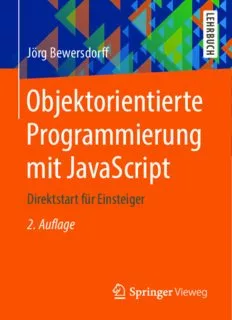
Objektorientierte Programmierung mit JavaScript: Direktstart für Einsteiger
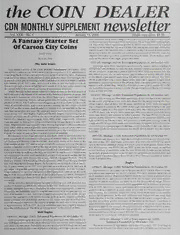
The Coin Dealer Newsletter Monthly Supplement Newsletter: 2006

ERIC EJ792659: Higher Education Trends and Opportunities

But enough about me: a memoir

CRS 5: Labelling of Pre-packaged Foods

Asia Pacific Viewpoint 2006: Vol 47 Index

Banu-APA MAZMUR. DERIPADA KITAB ZABOR
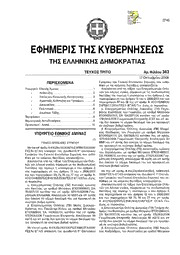
Greek Government Gazette: Part 3, 2006 no. 343
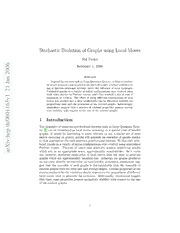
Stochastic Evolution of Graphs using Local Moves
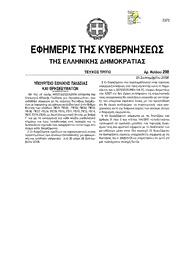
Greek Government Gazette: Part 3, 2006 no. 298
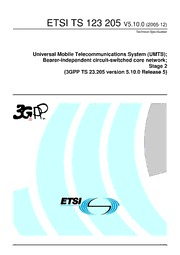
TS 123 205 - V5.10.0 - Universal Mobile Telecommunications System (UMTS); Bearer-independent circuit-switched core network; Stage 2 (3GPP TS 23.205 version 5.10.0 Release 5)

GDM November 2009
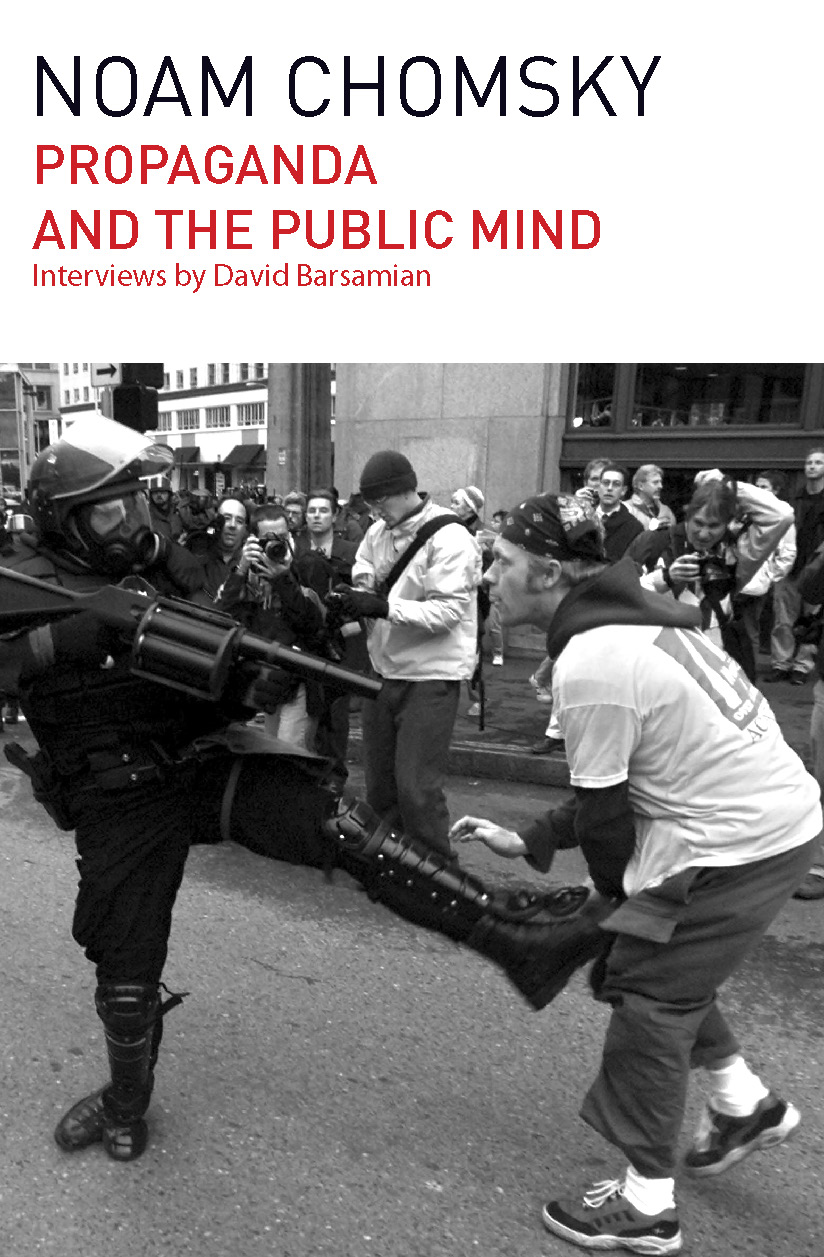
Propaganda and the Public Mind
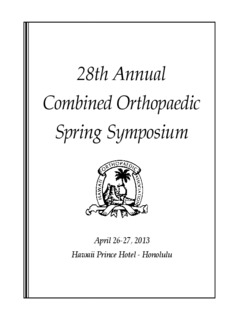
2013 HOA Symposium Syllabus - AAOS Error Page

Investigation of production scheduling problems motivated by semiconductor manufacturing
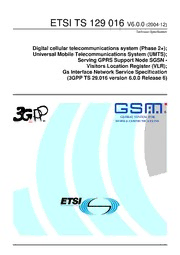
TS 129 016 - V6.0.0 - Digital cellular telecommunications system (Phase 2+); Universal Mobile Telecommunications System (UMTS); Serving GPRS Support Node SGSN - Visitors Location Register (VLR); Gs Interface Network Service Specification (3GPP TS 29.016 v
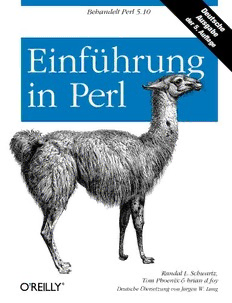
Einführung in Perl, 5. Auflage


